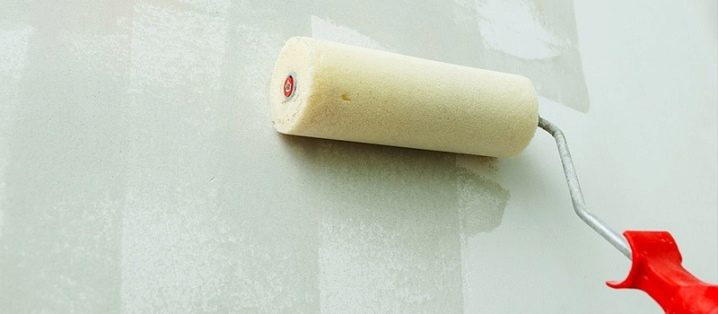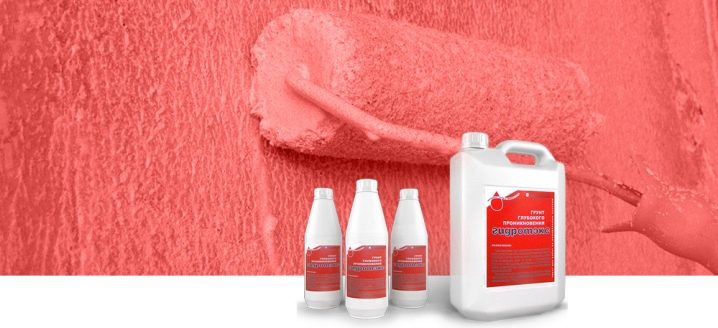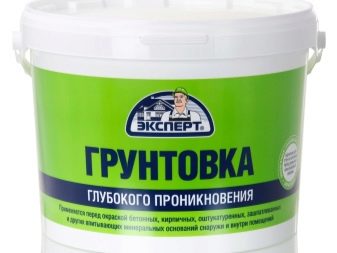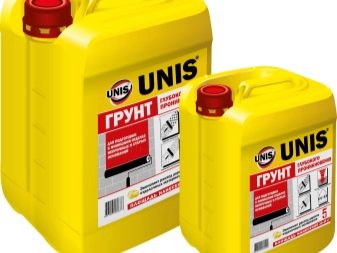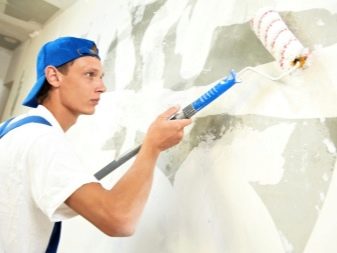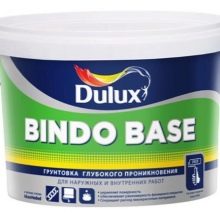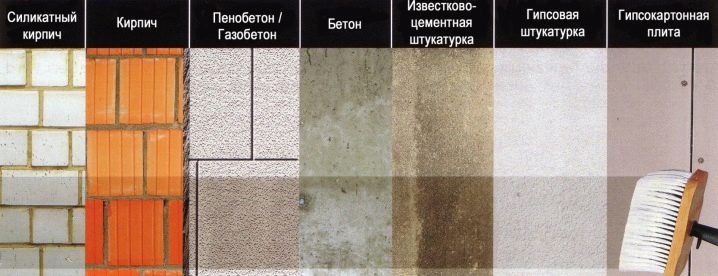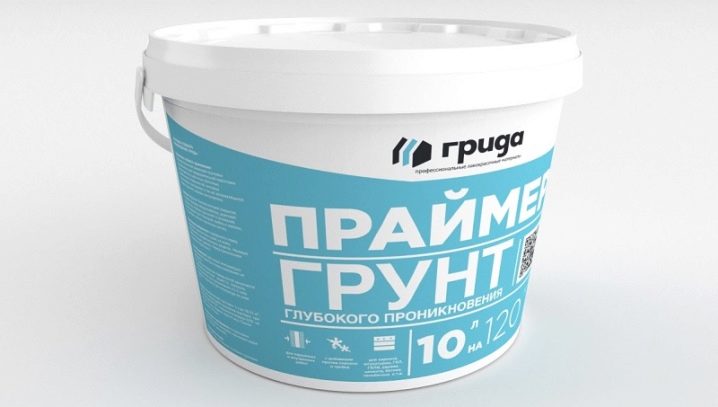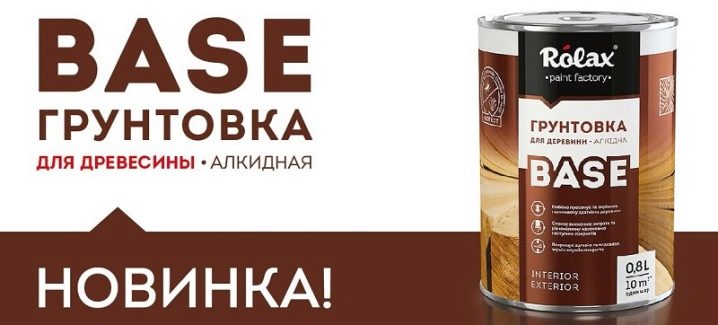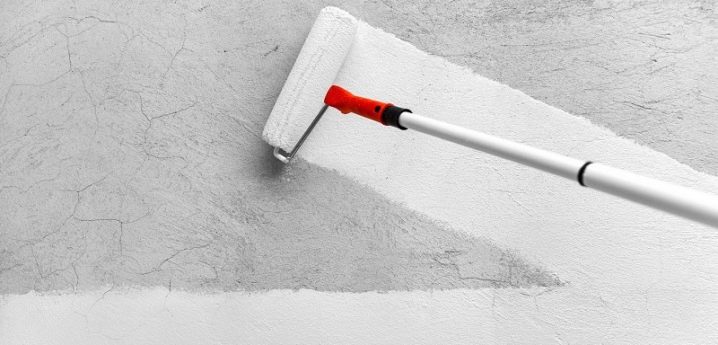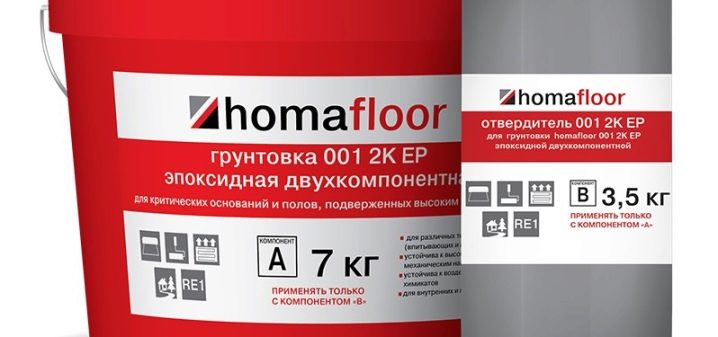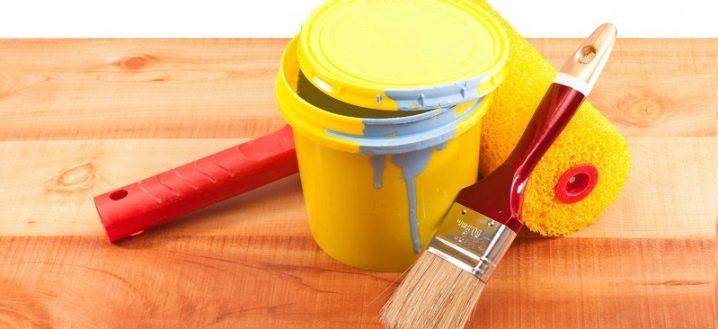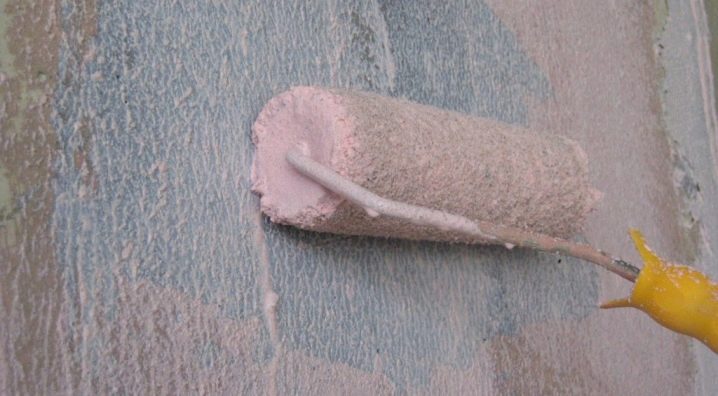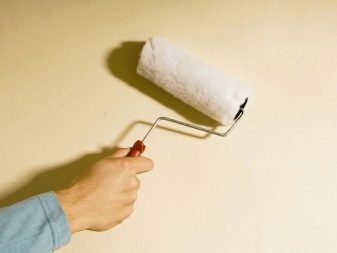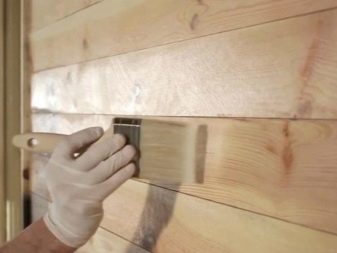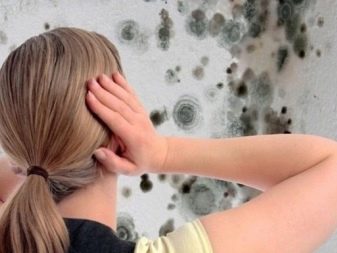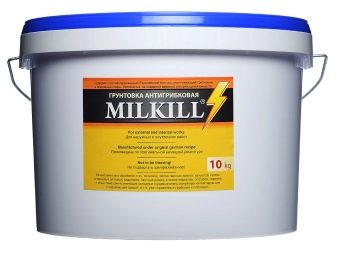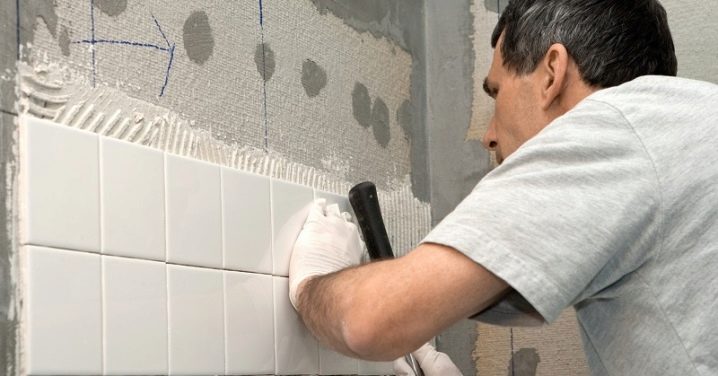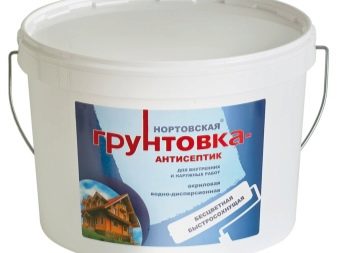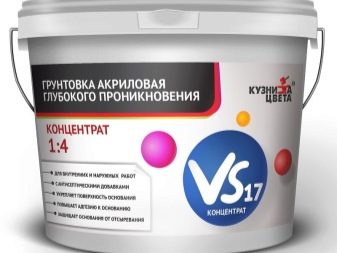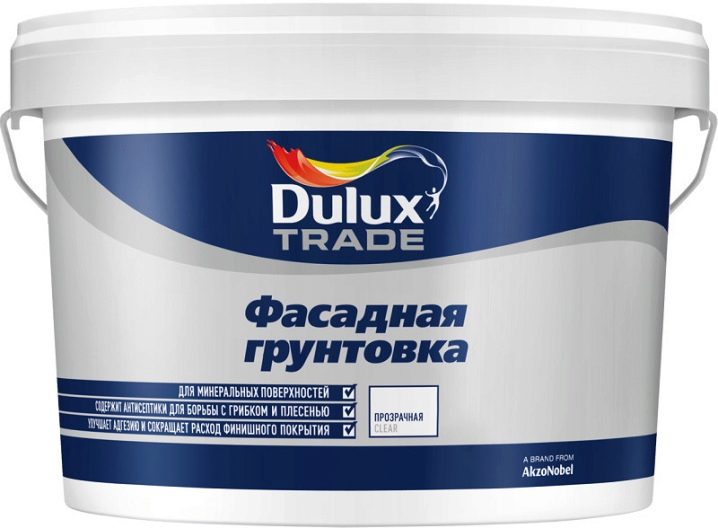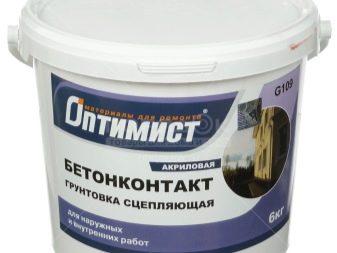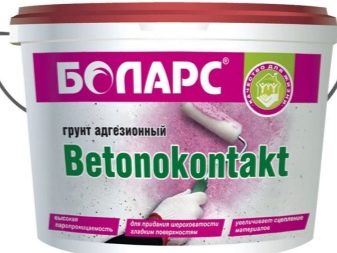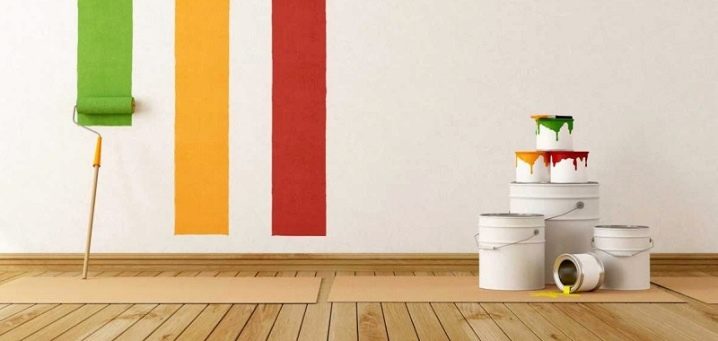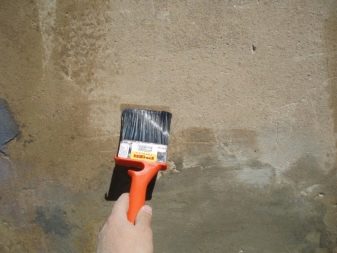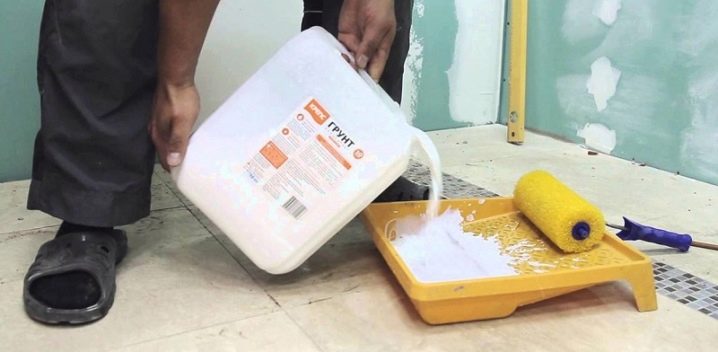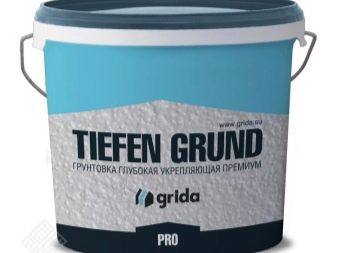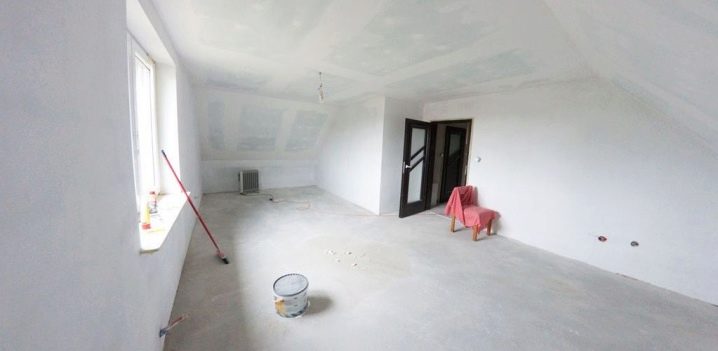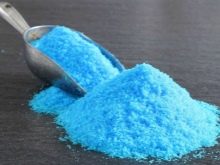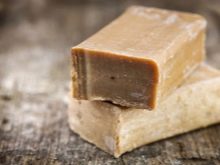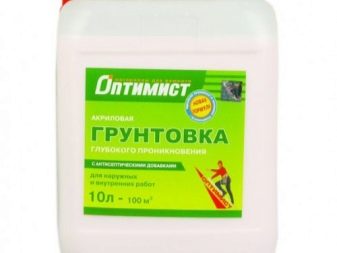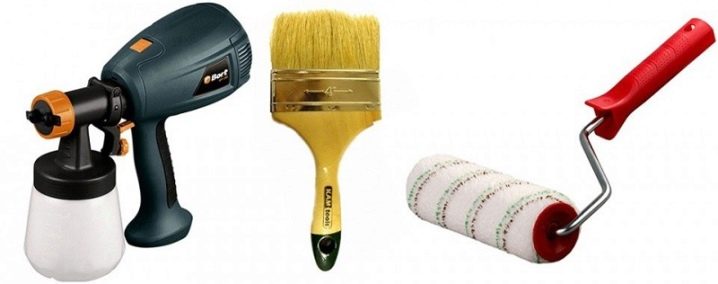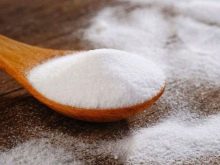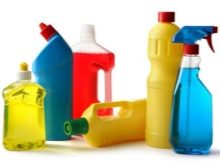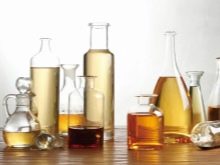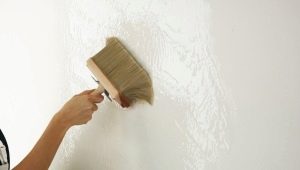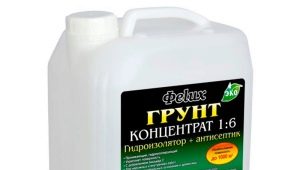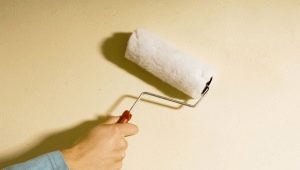Deep penetration primer: material features
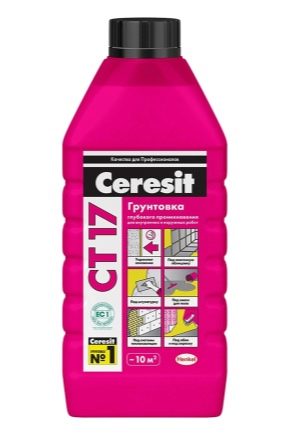
When finishing walls and other surfaces always requires preparatory work. And practically none of them can do without priming. Often for this purpose it is used primer deep penetration. These compositions are very popular and significantly prolong the durability of repair. Therefore, it is necessary to study the characteristics of this material and the principles of its choice.
What it is?
Every time when repairing a wall, floor or ceiling is required, it is imperative to prime them before applying a finish. The primer is used before painting, puttying, sticking wallpaper, laying tiles, decorating walls, floor and in other cases during construction.But not everyone knows that there are different types of primer, which differ in their principle of action.
Depending on how the base is, choose different types of primer. In some cases, this is the soil of deep penetration. From the name of this finishing material it can be understood that the composition is absorbed deep inside the surface on which it is applied. Thus, the walls are impregnated to a depth of more than 1 cm. Such compositions strengthen the walls. This increases the reliability of the finish.
This soil is mainly intended for the impregnation of porous surfaces. In this case, the primer acts as a binding element for the base material. Thus, it is able to reduce the possibility of shedding and destruction of plastered surfaces, as well as the peeling of whitewash elements and other materials.
Deep penetrating primer is excellent for interior applications. This composition has high-quality technical characteristics that allow it to be used even in the most aggressive conditions. Penetrating primer has a special chemical composition, which improves its properties.It includes acrylic resin and water dispersion.
The polymers included in these mixtures increase the capillary effect, thereby affecting the depth of penetration of the composition. The principle of this mixture is as follows: after evaporation of moisture, which is present in the primer composition, the resin particles are interconnected, thin binder yarns are formed from them. It is they who act as a binding frame, which permeates the entire upper layer of material.
Special features
Soil of deep penetration has a number of features that distinguish it from the protective primer. So, it provides the most smooth and even application of the finishing finishing layer. Even the thinnest paintwork composition, including water-dispersion paint, as well as wallpaper and other materials, lays well on it.
This composition reduces the level of absorption of finishing materials. Filling all the pores on the surface-base, it significantly reduces the consumption of building and finishing mixtures. Thanks to him, paint and varnish as well as adhesives will not be wasted. They will remain on the surface in the same quantity as they were originally applied.
Deep penetration formulations often have antiseptic characteristics. Thus, they do not allow bacteria and other microorganisms to multiply, increasing the quality of the coating.
A feature of these compositions is their versatility. They are suitable for many surfaces. Manufacturers even present the models that are called so - universal deep penetration primers. They can be used for processing any surfaces.
These compositions differ in some characteristics. depending on the species. However, there are a number of properties that are characteristic of all types of deep penetration primers.
So, their composition is mainly water. She is a thinner. The composition of these materials practically does not use chemical diluent. The maximum amount of non-volatile substances in the soil of deep penetration is not more than 20%.
The density of the deep penetration primer is similar to that of water. and is 1 kg per 1 cu. dm That is why a feature of this composition is that in the process of repair it is possible to calculate its consumption. As a rule, for finishing 1 square.m is spent from 100 to 200 g of this material, depending on the quality of the base. The absorbing ability of the base can greatly increase the flow, despite the fact that you will use the same primer for different surfaces.
A feature of the deep penetration primer is the short time it dries. But, as a rule, the specific period of time for which it dries depends on what percentage of the total mass is water.
Even the most well-impregnated surfaces dry in no more than 3 hours. Particularly porous surfaces can dry in an hour. The fastest compositions dry at an air temperature of +20 degrees and a humidity of 70%.
But this composition can be applied in rooms with high humidity. From this, its properties will not deteriorate at all, only it will increase its drying time.
An important feature of the use of deeply penetrating soils is that they are used for certain finishing materials. As a rule, it is cement plaster or walls for painting, brick, lime whitewash before gluing wallpaper, solid concrete, concrete screed, aerated concrete, OSB, chipboard.
A deep penetration soil can greatly affect the rate of material absorption, despite its appearance. When finishing it is often used for concrete, aerated concrete and foam concrete.
The primer of deep penetration does not fall well on the surface.if it has dirty or oily stains. Therefore, the wall must always be prepared in advance. If you find stains already after they have covered the wall with this composition, you must remove the contaminated area along with the primer. Otherwise, the properties of the material in this area will be greatly degraded. Absorbency at places where there is an oil stain is always lower. Therefore, the desired effect will not be, the primer is simply not absorbed.
This soil is great for business and industrial premises. In houses and apartments it is often used in the repair of kitchens and bathrooms. In these areas, it deeply impregnates walls, floors and ceilings and allows you to fight against fungus and mold. Thus, a durable and reliable layer is formed on the surface, which significantly reduces the level of water absorption.Due to this, the surface is not destroyed by moisture, and also reduces the possibility of the development of harmful microorganisms.
Although deep penetration is absorbed into the texture due to the presence of acrylic polymers, it does not lose its vapor permeability characteristics. Thus, the composition allows the walls to breathe and creates a comfortable indoor microclimate.
Kinds
Primers of deep penetration are divided into types according to different criteria. All of them have certain quality characteristics and differ in their composition and purpose.
Acrylic
These soils are classified as universal. They are designed to handle almost all types of surfaces that are generally compatible with this impregnation. They are even used for finishing concrete, wood and drywall. Acrylic compounds are absorbed into the base material to a depth of 2 cm. Of course, the composition does not penetrate so deeply into dense materials. The penetration layer is usually at least 1 cm.
Acrylic penetrating primer is ideal for wallpapering. As a rule, it is often used in combination with non-woven and vinyl wallpaper coverings.
Alkyd
These compounds include chemicals - alkyds, which give them useful properties. As a rule, such primers are designed for the treatment of metal and wood surfaces. Alkyd formulations are not as expensive as acrylic. They can not be attributed to the universal, because each alkyd composition has a clear purpose: either for metal or for wood, differing in its absorbing properties.
Silicate
These compounds are most often used before finishing the walls with decorative plaster. They ideally fasten the surface-base and do not allow these materials to crumble. They are also often used in conjunction with such strong bases as silicate, aerated concrete, gas silicate, concrete. Silicate soils are often used for exterior work, less often for interior decoration.
Epoxy
These penetrating formulations are used only in certain cases. The first option to use a deep penetration epoxy primer is to coat metal surfaces in order to provide protection against corrosion. The second application is to improve the adhesion of concrete with self-leveling floors for interior decoration.
Shellac
These compounds are used for deep impregnation of wood in order to remove the resin from its texture. They prevent the release of these substances and make decorative coatings of wooden, and especially softwood, more qualitative and uniform.
Polystyrene
This type of soil is considered one of the few that is toxic. That is why polystyrene compositions are mainly used only for finishing facades of rooms in the air. Inside buildings, this soil gives off toxic elements and an unpleasant odor. In outdoor works, polystyrene compounds are used to coat concrete, as well as to finish plaster walls.
Polyvinyl acetate
These impregnations are most often used for interior decoration. Due to the peculiarities of the chemical composition of these soils dry in less than an hour. That is why they are so popular in cases where the apartment is necessary to conduct a quick redecoration. Polyvinyl acetate is suitable for wood and metal, and for the use of plaster.
Aluminum
These penetrating compounds include an element such as aluminum.They have waterproofing properties, so that water is not absorbed into the base. That is why they are most often used for processing wood. In addition, aluminum compounds prevent the spread of microorganisms and tree infection with other characteristic diseases, in addition, they save wooden surfaces from rodents and insects.
Antifungal
Their main purpose is to fight against mold and fungus on the premises. They prevent diseases of the respiratory system, which often affects the fungus. Antifungal mixture at times improves the indoor climate. A feature of these compositions is that they include fungicides. They influence the spread of fungal spores.
Antifungal primer may have a different composition. Manufacturers are alkyd, acrylic, mineral compounds. In addition, antifungal mixtures are intended for deep impregnation of surfaces that have already been affected by mold. With their help, you can get rid of it.
Although mostly they do not penetrate very deeply, they cope perfectly well with their purpose.They are ideal for use in rooms with a high level of humidity, but they are distinguished by a strong odor.
Antiseptic
These impregnations have a slightly different purpose than antifungal. As a rule, they are mainly used not to get rid of the fungus, but to prevent its appearance and development. They also perfectly protect any surface from the appearance of mold.
Antiseptic compounds can not be applied to surface areas that have already been affected by fungus or mold. Basically, they are used for surface treatment in bathrooms, especially they are relevant when laying tiles of any type.
Antiseptic soils also include fungicides in their composition, have a certain manufacturing technology and are manufactured according to GOST. Only such qualitative compounds do their job well and are ideal for preventing the development of harmful microorganisms.
Antiseptic compositions are also used in wall decoration with non-woven and vinyl wallpapers. Almost all antiseptic soils are used only if the base material has good absorbency, otherwise the treatment will be ineffective.
As a rule, soils with antiseptics are colorless and odorless.
Facade
These impregnations are used for exterior finishing. As a rule, they are presented in the form of silicone or silicate formulations. Basically, the facades are composed of mineral materials, so the primer for them includes special components. Thanks to them, you can apply the soil even on the most loose surfaces. Moreover, some manufacturers are facade primers that can be used even at elevated air temperatures.
Facade primer with deep penetration helps to compensate for the loss of plaster. Some compounds can be cracked to fill them and thus strengthen the surface. They are ideal for the repair of old buildings, and in the construction of new ones.
But this type of impregnation is not recommended for plaster coatings. In addition, its effectiveness is reduced by several times, if the composition is applied at negative air temperature, which is an undoubted disadvantage.
Concrete Contact
These impregnations are used to improve the adhesion of the concrete, since this material itself is rather smooth after drying.These primers are composed of solid particles of mineral origin. That is why the treated surfaces become slightly rough.
Concrete type compounds are not intended to strengthenThat is why they process only the most dense concrete bases. Their consumption is not too big. But they have substantial prosperity: the drying time is usually more than 6 hours and sometimes reaches 12 hours.
Harboring white
These compounds are ideal for processing walls and other surfaces for painting. Basically, they consist of water, polymers, including latex. They are able to hide any flaws that exist on the treated surfaces. With their help, you can cover up stains, soot, tar, and greasy stains.
They are used for finishing various surfaces, including dense solid concrete and looser wood and even metal. Latex primers are often used in combination with alkyd. Thus, first the surfaces are treated with alkyd compounds, and only then they use covering latex compositions.
Although these soils are deep penetration formulations, the level of impregnation is small because they perform a strengthening and protective function.In addition, they can be used even when finishing walls with thin light-colored materials, for example, pastel paint or thin wallpaper.
Which is better?
All types of soil have their pros and cons, and therefore, in order to choose the right impregnating compositions, it is necessary to make a comparison. For example, acrylic compounds penetrate deeper into the surface. That is why they are considered the best. Popularity is due to their compatibility with many surfaces. These primers reduce the consumption of paint and varnish compositions, which is why they are better to choose if you plan to paint the walls.
When choosing a deep penetration primer it is necessary to take into account, for interior or exterior finishing you are going to use them. For internal finishing works, the compositions are chosen mainly latex or, again, acrylic. This is due to the fact that they are completely odorless and dry rather quickly.
But for the exterior finish is better to use frost-resistant types of soil, such as silicate. If the room is wet, then an antiseptic primer is best. This also applies to exterior decorating.
To decide which primer is best suited, you need to consider the surface material. Only acrylic, alkyd primer and concrete contact are suitable for concrete. For wooden surfaces it is better to use an antiseptic on an oil basis, for a brick it is better to choose anti-alkaline impregnation, and the compositions used before laying the tile should always have antifungal properties.
If you plan to carry out repairs in a short time, then try to acquire the fastest drying compounds. Although some of the impregnations are of higher quality, they are able to delay repair at times, because in some cases they have to be applied in several layers.
When choosing such a soil, be sure to consider what the manufacturer indicates on the package. As a rule, there is a list of suitable finishing materials that fit well on such impregnation. In this case, most of all the advantages of a universal soil, because it is suitable for almost all decorative coatings.
The manufacturer also plays an important role. It is advisable to give preference only to well-established brands in the market.The ideal is a deep penetration primer, which has low consumption, well impregnates surfaces, has all the necessary qualities and properties depending on the specificity of the room, and also has a good price-quality ratio.
How to calculate the quantity?
The calculation of the consumption of primer deep penetration - a rather difficult task. This is due to the fact that the absorption capacity of different surfaces varies greatly. As a rule, compositions that are applied to concrete have a consumption of about 100 to 200 ml per square meter. m. But there are also economical types of primer for concrete, for example, a highly concentrated primer from the manufacturer Knauf, which are per square meter. m consumed in a volume of from 70 to 100 ml.
Acrylic impregnations are consumed in no more than 250 ml per square meter. m Consumption of antifungal compounds is more and is about 300 g per square meter. m. Antiseptic has a fairly economical consumption, which averages 100 ml per square meter. m. Facade compositions consumed within 300 ml per square meter. m, depending on the complexity of finishing works.
Many of those who decided to make repairs with their own hands, are wondering about the compatibility of such impregnations with drywall. Since drywall is afraid of moisture, water-repellent impregnations are often used to treat it.Thus, this composition allows to improve the technical characteristics of drywall, and also improves the adhesion of this material.
Absorbent compounds also strengthen plasterboard. For this you can use many types of soils of deep penetration, in some cases even concrete contact.
What to replace?
Deeply penetrating soils can be replaced by hand-made compositions. To create them, you can use copper sulphate, wood glue, laundry soap. These elements must be mixed in a ratio of 1: 5: 2.
Some also recommend making such compounds based on PVA glue. It improves the water resistance of surfaces and perfectly replaces ready-made commercial primers. For the preparation of such compositions, PVA glue is diluted with water in a ratio of 1: 8 and some cement is added to thicken.
Manufacturers and reviews
Now in the ranking of the best domestic soils includes composition "Optimist". This is a deeply penetrating universal primer, which is suitable for both internal and external finishing.
"Miners" - Another universal primer, which left a lot of positive feedback.It is designed to strengthen the working surface and its impregnation. Buyers note that it works well and extends the life of coatings.
Useful tips
Deep penetration primer is best applied using certain tools. So, experts advise you to purchase a brush or a special can for this. But for the impregnation of smooth surfaces, especially for concrete walls or floors, it is desirable to use long-hair rollers.
An important piece of advice given by many repairmen is that such a primer should be applied only at a temperature not lower than 15 degrees.
For the greatest efficiency, it is better to apply a deep penetration primer twice. It is also advised to do and instructions from manufacturers of mixtures. First you need to process the wall before applying the putty, and a second time to cover the ground layer of putty just before painting or gluing wallpaper.
When applying a primer, many are faced with the fact that it falls on surfaces that were not intended to cover them.
To remove these compounds, you can use some methods:
- dilute the soda with water and clean the surface;
- use detergents;
- apply acid-based formulations;
- Acetate essence concentrate helps to remove the primer well.
For how to make a deep penetration primer, see the next video.
